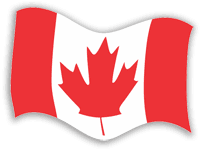 #9 Democracy in
Canada: Elections and Voting
#9 Democracy in
Canada: Elections and Voting
by Adam Chapnick
| Canada’s first federal election was hardly democratic. Voting in
1867 was limited to upper class, male, British subjects. There
was no secret ballot and no law to govern campaign
contributions. Those who were eligible to vote might not have
seen or heard from the party leaders (there was no radio or
television to broadcast debates), and there were no opinion
polls to tell them how their preferred party seemed to be doing
across the country. Results of the election would not have been
known for several days and newspapers would not have had
complete stories until after that. The evolution of Canadian democracy came in stages. The Dominion Elections Act of 1874 introduced the secret ballot. The franchise began to be extended to women and others during the First World War. The position of Chief Electoral Officer — an individual charged with watching the process and legality of the election — was only created in 1920. The legal voting age was reduced from 21 to 18 in 1970. The National Register of Electors (the permanent voters list) was created in 1997. Cash subsidies to political parties based on their percentage of the popular vote were introduced in 2003. And bans on corporate and union donations to political campaigns were enacted in 2007. Elections in Canada today are massive events. There are over 65,000 voting places spread across the country in schools, churches, and halls, and Elections Canada employs more than 190,000 temporary workers during what are normally 36-day federal campaigns. During elections the work of government slows, and no major policy decisions are made. Canadians who typically pay little attention to politics begin to familiarize themselves with the issues of the day. Opinion polls and the national and local media become critical players in the political landscape. Voters cast their ballots at the polls (open for 12 consecutive hours on election day), through advanced polls, or in some cases by special ballot through the mail. Mobile polls are used to allow those in chronic care institutions to take part in the electoral process. Political leadership debates are televised, and the television and radio stations allocate free and paid air time to political parties during the campaign. In spite of all of the changes since 1867, the key to Canada’s approach to elections and voting — the first-past-the-post system — has remained the same. In a federal election, the candidate in one of Canada’s 308 constituencies or ridings who receives the most votes, regardless of whether he or she captures a majority of the total votes, wins the seat in the House of Commons. As a result, parties that form majority governments in Canada often receive far less than 50 percent of the popular vote. The most glaring example of the pitfalls of this system was evident in 1993 when the Progressive Conservative Party won 16 percent of the popular vote but just two out of the then 295 seats in the House of Commons, while the Bloc Québécois’ 13.5 percent of the vote brought the party 54 seats. The Bloc’s votes had been concentrated in Quebec; the Conservative vote was spread across Canada. Given such results, it is hardly surprising that Canadians differ over the merits of the first-past-the-post system. Some argue that representation by population — a party that wins 15 percent of the popular vote would receive 15 percent of the seats in the House of Commons — would better represent the will of the country. Others respond that “rep by pop” would lead to endless minority governments tied to the immediate demands of special interest groups and unable to develop long-term policies that promoted national priorities. In spite of the intensity of this debate and of political debates in general, voter turnout in Canada has been in decline for two decades. Until the 1990s, it was common for 75 percent of the electors on the voters list to cast ballots. In 2004, just 61 percent voted, and under 65 percent turned out in 2006. Youth turnout is significantly worse, averaging less than 40 percent in recent elections. Many political analysts fear that a continued decline will erode the legitimacy of Canadian democracy. Some Canadians argue that the solution is mandatory voting, as in Australia. Others counter that forcing people to vote would only increase the number of uninformed Canadians making serious decisions about their country’s future. They want improved public education, and many suggest online voting as a way to increase participation. Although Canadians are often critical of their electoral system, by international standards, it remains one of the best. Since 1980, Elections Canada has advised over 100 countries on democratic governance, and electoral fraud in Canada remains extremely rare. Further reading: John C. Courtney, Elections; John Duffy, Fights of Our Lives: Elections, Leadership, and the Making of Canada Next Instalment: On Being ‘Canadian’: Citizenship The Canadian Experience is a 52-week history series designed to tell the story of our country to all Canadians. Sponsored by Multimedia Nova Corporation and Diversity Media Services/Lingua Ads partners, the series features articles by our country’s foremost historians on a wide range of topics. Past articles and author bios are available at http://www.cdnexperience.ca. The Canadian Experience is copyright © 2010-2011 Multimedia Nova Corporation. |
The Canadian Experience communicates to
us about the many facets of Canada, the people, the Charter, brings us
reality and creates understanding.
Copyright ©2010 Echoworld Communications. All rights
reserved

